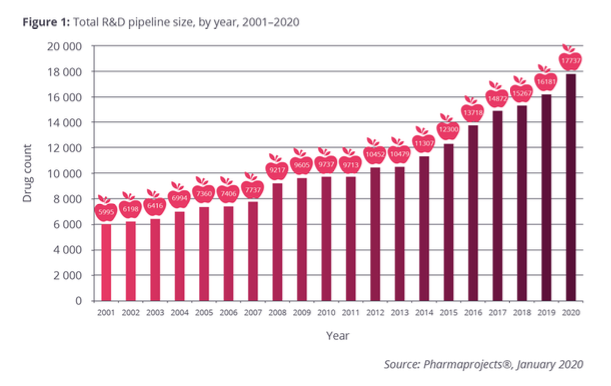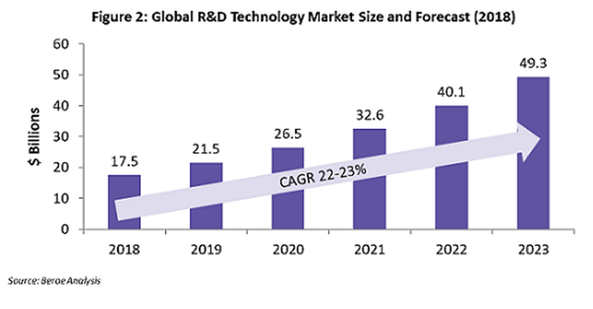Clinical Trials Are Changing—What Does This Mean For IRT?
Expectations for trial design will continue to change, and it’s critical that IRT vendors continue to listen to their customers and evolve their offerings accordingly.
In the past decade, several key factors have disrupted the clinical trial landscape. Increased pipeline development, the emergence of small biopharmas, and a shift in R&D focus have all made a notable impact on the design and expectations of clinical trials. Out of necessity, it is clear that the landscape has, and will continue to, evolve.
As is typical with any disruption, an appetite for new technological efficiencies will soon follow. One area that has long been ripe for streamlining is patient randomization and trial supply management (RTSM/IRT) technology, which must change to meet the demands of the industry.
Breaking down the hype—is the landscape really changing?
Pipeline development & the emerging biopharma
In 2020 alone, the pipeline has grown close to 10% and already stands at 17,737 drugs (Pharmaprojects analysis). Development shows no signs of slowing down.

The increasing number of companies entering the space, many of which are smaller biopharmas, are driving this growth in development. A report by IQVIA stated that, as of June 2019, there were 3,212 active emerging biopharma companies, defined as having less than $200 million in estimated annual spending on R&D or under $500 million in global revenue.
These smaller companies are making significant contributions to the R&D pipeline. They are developing more than 90% of next-gen therapies, represent 73% of late stage research (which saw a 15% growth in products in 2017 and 2018), and ran 65% of clinical trials in 2018 alone.
While traditional “large pharma” still represents a significant proportion of R&D programs, it is clear it no longer dominates the landscape. These small biopharmas have different needs than large pharma, and clinical trial technologies must adapt to meet these needs.
R&D focus
In addition, smaller more niche therapy areas with high levels of unmet need have become the focus of R&D programs—figure 3 shows the steady increase in the number of rare and orphan diseases under investigation. Trials for these drugs carry their own challenges and specifications, contributing further to the changing landscape.

Responding to disruption
To meet these growing demands, trials are becoming faster, decentralized and virtual. The specifics of the trials themselves—the size, duration and number of endpoints—is also shifting. Protocols are also becoming increasingly more intricate to design and implement, given the need to target smaller, more niche populations.
In addition, COVID-19 has been a major disrupting influence on the clinical trial model. Due to stay-at-home orders, many patients in ongoing studies were unable to travel to clinical sites for routine visits. As result, many major trial sponsors were forced to reevaluate trial conduct and shift to decentralized or partially-decentralized (hybrid) models. In each of these models, data collection is fully or partially shifted from point-of-care clinical sites to the patient’s home. This shift, coupled with remote or risk-based monitoring conduct, invariably requires the addition of new technology solutions to accommodate these new trial models.
Increased reliance on technology
A Beroe study found the use of technologies within the R&D space is growing annually at a rate of 22—23% (Figure 2) a trend that (pre-COVID) was fueled by real-world evidence (RWE), patient adherence and enrollment solutions, and data analytics for trial insights.

From risk-based-monitoring and statistical software, to in-home patient adherence and compliance solutions, the list of technology products and solutions continues to grow.
Securing successful IRT partnerships
IRT plays a central role in study conduct, however it is clear that legacy systems have not modernized adequately. The key trends discussed within this article will surely shape new expectations moving forward. IRT systems are incredibly powerful and crucial to a study’s success, but they are not exempt from the cumbersome administration, implementation, and customization processes that go hand in hand with any new technology adoption. Therefore, it is crucial to adapt these processes, as best as possible, to the changing pace of play in the industry.
In May 2020, Almac conducted a research project with representatives from sponsor organizations of varying sizes responsible for outsourcing IRT solutions to asses these changing needs. Lengthy build times and inflexibility when protocols change was identified as some of the prevailing issues with current IRT technologies.
Expectations and preferences for trial design will continue to change, and it’s critical that IRT vendors continue to listen to their customers and evolve their offerings accordingly. IRT vendors must deliver more efficient and flexible systems to meet these pain points, today.
Abi Pesun is the Director of the Clinical Project Services and Almac ONE groups at Almac.
Abi Pesun

Newsletter
Stay current in clinical research with Applied Clinical Trials, providing expert insights, regulatory updates, and practical strategies for successful clinical trial design and execution.